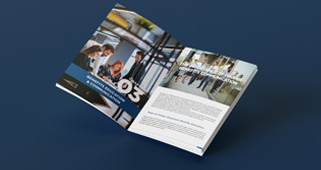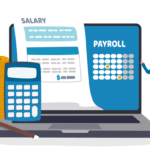Your business takes great care in selecting the best health benefits for its employees. You’re your annual open enrollment period rolls around, there are some basics you’ll need to know in order to make everything run as smoothly as possible. Read on for the essential information about passive enrollment that all human resources professionals and business owners should be aware of.
You may already know that open enrollment is an annual period where your employees can either enroll in, decline, or change their option selections under the health insurance plan and other health benefits your company provides. Federal law requires your company to hold this window open for a certain period of time. During this period, employees can also make changes to their dependent information and enroll in or adjust tax-advantaged accounts.
Of course, employees can still do these things at other times of the year, too – but typically only if they undergo or have experienced a “QLE,” or qualifying life event. A qualifying life event is defined by healthcare.gov as a “change in your situation—like getting married, having a baby, or losing health coverage—that can make you eligible for a Special Enrollment Period, allowing you to enroll in health insurance outside the yearly Open Enrollment Period.”
When it comes to understanding the basics of your company’s open enrollment period, you’ll want to know the following:
What Does Passive Enrollment Mean?
As we previously discussed, companies are required by law to hold an open enrollment period. However, it is up to the business itself whether that enrollment period is “passive” or “active.”
If your company has selected passive enrollment for your employee health benefits, you do not have to require your employees to take any actions themselves. Under the typical passive enrollment period, the benefits selections an employee made the previous year will either roll-over, if no changes have been made, or if changes have been made, the most similar options will be automatically selected for them.
Just because your company has selected a passive enrollment period does mean your employees can’t make changes if they want to – they always can! They just won’t lose existing or similar coverage if they do nothing.
Be aware, however, that there is a crucial exception to the luxury of automatic rollover or auto-selection provided by passive enrollment, and that is that flexible spending accounts, or “FSAs” cannot be passively elected. A flexible spending account requires an annual election and contribution; in other words, employees must decide year after year they want to participate in the FSA in order to keep the account. Keep in mind also that this applies to Healthcare FSAs, Limited Purpose FSAs, and Dependent Care FSAs.
What Does Active Enrollment Mean?
We can’t discuss passive enrollment without a brief overview of active enrollment. Think of active enrollment as simply the opposite of passive enrollment, or in other words, exactly what it sounds like, now that you’ve learned about passive enrollment! If your company selects active enrollment, your employees must actively elect, renew, adjust, and or decline their health insurance and benefit coverage options.
The Pros and Cons of Active versus Passive Enrollment:
According to a survey conducted by HighRoads, approximately 71 percent of U.S. employers choose passive enrollment practices overactive enrollment. Passive enrollment is especially popular if your company does not often make significant changes to its health plans and benefits offerings.
Many companies feel passive enrollment is the more convenient option for their human resources department. It typically and requires less administrative work to get through the open enrollment period. It also ensures that employees won’t lose their health coverage just because they’ve forgotten about the open enrollment period or missed the deadline to make a change.
On the other hand, some businesses who select passive enrollment worry that their employees won’t carefully think through their health care and benefit decisions, or worse, not understand all the great benefits and savings that are available to them when enrolling through their employer if they are not forced to actually look at their options annually. Some employers also find that their employees enroll in fewer health benefit “extras” under passive enrollment.
Should we Choose Passive or Active Enrollment for Our Organization?
Making the right choice for your business’ open enrollment can be tricky for even the most seasoned human resources professional! When weighing the pros and cons of active versus passive enrollment, it always helps to talk to an expert, and Benely is here to help. Contact Benely for assistance and advice on any and everything related to choosing the perfect health benefits package for your employees.






